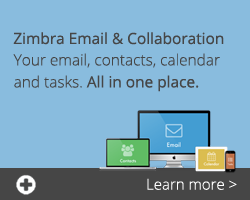
What really is the Cloud?
You’re travelling and want to back up your pictures – you back them up with Dropbox. You’re working remotely and need to share a confidential file with a fellow co-worker – you upload it to Google Drive. You are worried about your iPhone being lost or stolen – you sync your contacts and messages with iCloud. All of these products offer a different solution of the Cloud. You know that your data has become easier to access, wherever you are and it sure is convenient, but is it secure and how does it work? Where are your files going? Who has access to them? Are they still your files? What really is the Cloud?
The Cloud
It’s not just one Cloud. It’s not magical. It’s a business and a brilliant one.
In a nutshell, the Cloud is a large network of computers that creates copies of your data and stores your files on different servers. These servers are comprised of numerous computers that are housed in large warehouses all over the world. Servers are shared by multiple companies, hundreds of individuals, and thousands of devices – in short the server is not solely designated to your device, it is home to the data of a larger population. Essentially, the Cloud provides a promise and convenience to access your files wherever you are.
This is an example of what the Cloud would look like:

History of the Cloud
The Cloud or formally known as Cloud Computing was invented in the 1960’s by Joseph Carl Robnett Licklider; one of America’s leading computer scientists. Over the next four decades, the Cloud was a work in progress. In 2006, Amazon launched its Elastic Compute Cloud (EC2), a commercial web service that allows individuals to rent computers on which to run their own computer applications. In 2009, Google and other large corporations started to offer browser-based applications, such as Google Apps. And shortly after, in 2010 Apple introduced iCloud. These cloud-based services created by the Fortune 500 companies have become an imperative tool for most internet users in the 21st century thus, making the word Cloud a recognizable term for many.
And to think before the Cloud we all relied on our devices to store our data internally. We would purchase a computer based off hard drive space and RAM. Now the Cloud does the heavy lifting and these features become less important.
Security and Privacy
A lot of people would be happy with the above explanation however there’s more to it and it involves the Cloud services you are using.
You’re trusting companies like Google, Apple, Amazon etc. with all of your data. You upload it to their system and expect it to be there when you choose to retrieve it and normally it is. So what’s the problem? As soon as you agree to the Terms of Services for the company you lose the rights to your own data. Companies like Google retrieve your data, collect it, and use it anyway they can. For example, have you ever wondered about an advertisement that seems to have been made specifically for you? Well it was. Companies like Google will use the information they have on you to cater their advertisements to the specific target market they are searching for. They know everything about you, your information is not private anymore and will be stored indefinitely.
Not only is your data not private anymore but there are copies of your files on multiple different servers. When you chose to permanently delete a file, are you really deleting that file on every server? Probably not.
In saying so, the Cloud is great for storing non-sensitive information like To-Do Lists or Calendar events, however, we highly recommend either encrypting your personal information before uploading, or using a company that provides more security and privacy for your data.
Thanks for reading! Feel free to contact us if you have any questions or want to enquire about our services.
Posted on September 25th, 2015 and last modified on September 16th, 2016.


